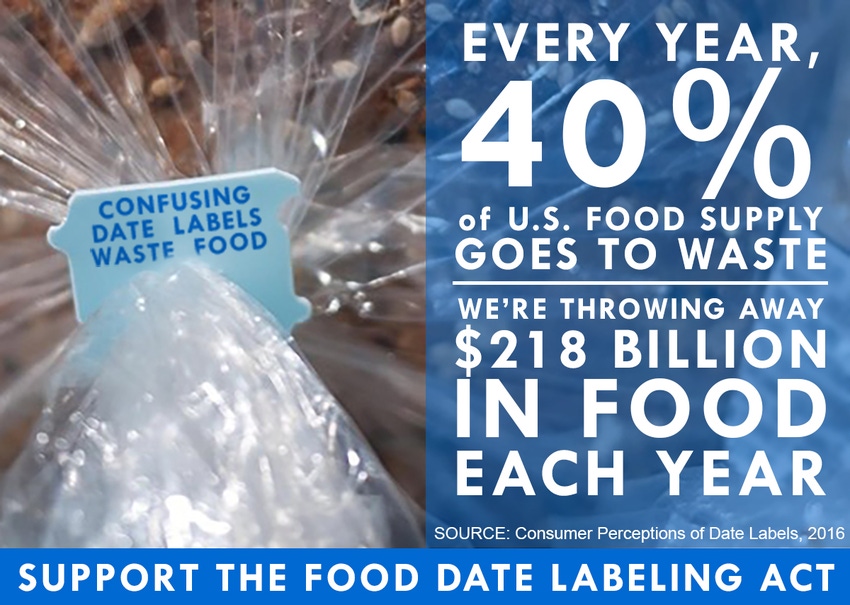Poll finds that majority of Americans debate whether to throw out food.
August 8, 2017

Results released from a recent nationwide poll conducted by Food Policy Action and the Grocery Manufacturers Assn. (GMA) show that nearly three in five Americans have debated or discussed with a spouse or significant other about whether or not to throw out food based on food date labels.
“It happens in my house all the time: One of us wants to throw something out because the date on the label has passed, and someone else thinks it’s still good,” said Tom Colicchio, Food Policy Action co-founder, chef and food advocate. "There is no federal standard for date labeling on food, and the confusion from the inexact patchwork system leads to wasting food that is perfectly safe to eat.”
The survey found that 57% of Americans have discussed whether or not to throw out food based on a date label with a spouse, partner or roommate. Women are more likely than men to say they have had a disagreement, and women are more likely than men to throw out food. However, the majority of men and women say they want to keep food for longer.
Other key poll findings include:
More than half of respondents claim that they are the ones who want to keep food longer, with 60% saying they were the ones to keep it and only 40% saying they were the ones who wanted to throw it out.
In general, men are more likely to say they want to keep food longer, with 64% of men claiming to be that side of the argument versus 56% of women.
Arguing about date labels isn’t a partisan issue, as nearly the same percentage of Republicans and Democrats (59% versus 56%) said they are on the side of keeping food longer.
There were some big regional differences in debate over throwing away food, with 47% in the Northeast saying they are on the "keep it longer" side, while that number jumps to 70% in the West.
Age is also a factor in the debate about throwing away food based on date labeling, with just 51% of those under age 30 arguing to keep food longer versus 64% of Americans ages 50-64 taking that side in the debate.
An estimated 40% of the food produced in this country never gets eaten, and while there are a lot of ways to reduce that number, studies have found that the single most cost-effective thing to do is to clear up the confusion surrounding date labeling.
Sen. Richard Blumenthal (D., Conn.) and Rep. Chellie Pingree (D., Maine) have proposed legislation to create a simplified, streamlined system that would use just two labels: one for quality and one for safety. A label of “Best By” for most foods would indicate an optimum freshness date but would not mean that food that has passed that date is unsafe. A second “Use By” label would be reserved for foods — like deli meats or smoked seafood — that are actually unsafe to eat after a certain date.
GMA and the Food Marketing Institute created and launched a voluntary national system in February 2017 calling on manufacturers and retailers to use just one of two date labels: “BEST if Used By” and “USE By” to help address consumer confusion.
These poll findings are from a survey of 1,008 Americans over the age of 18, fielded July 12-16, 2017. The survey was designed by Lake Research Partners and administered by Caravan Omnibus using professionally trained interviewers, and it reached 50% of respondents by cell phone. The survey has a margin of error of +/- 3.1% at the 95% confidence interval.
You May Also Like

.png?width=300&auto=webp&quality=80&disable=upscale)

